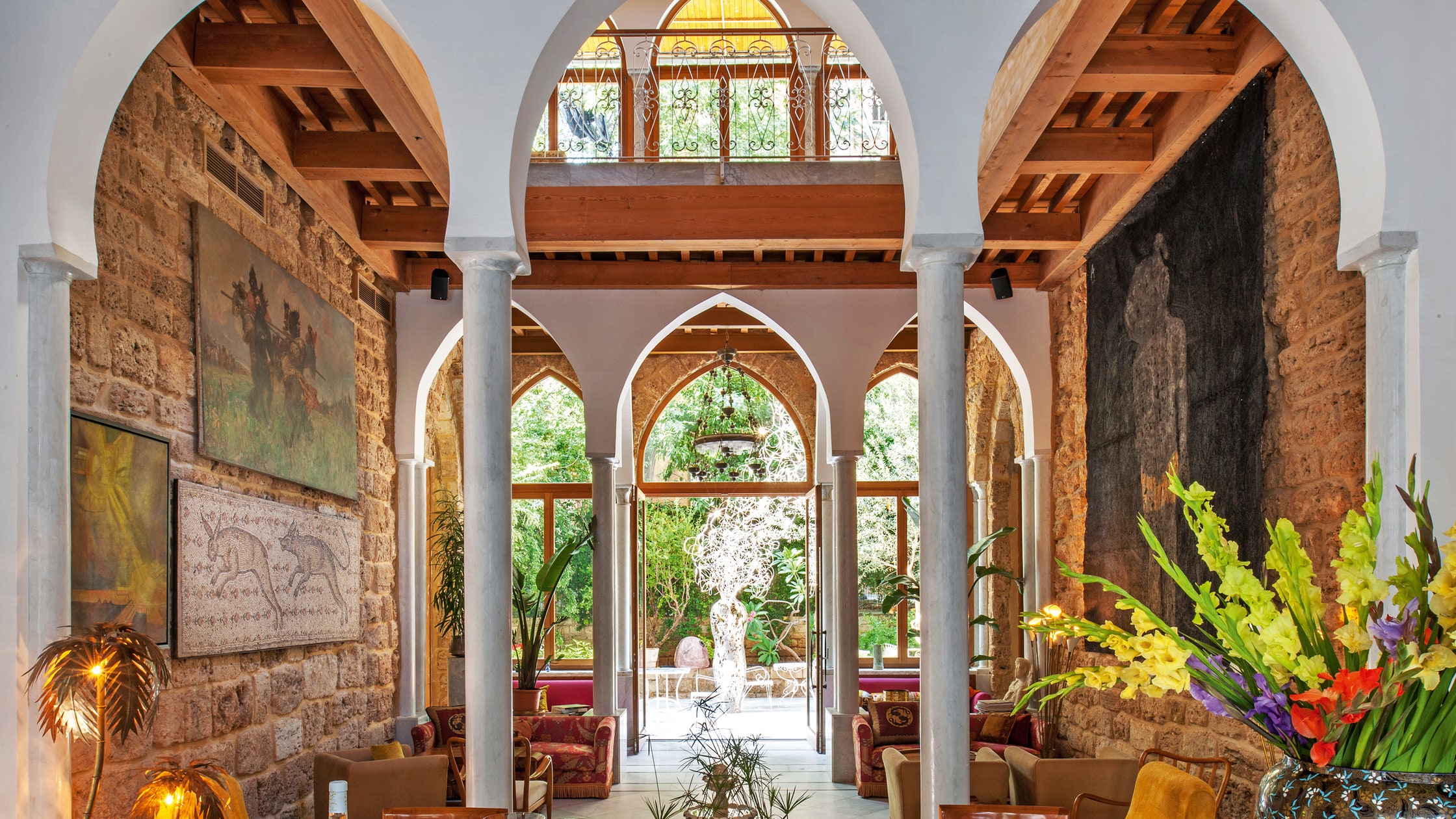Beirut’s Creative Resilience After the Explosion
‘For us, it was a declaration of war. Not physically, but against our culture, what we’ve been working towards,’ explains Nabil Debs, referring to the tragic ammonium-nitrate explosion – linked to suspected negligence – that shook the Lebanese capital last August, killing more than 200 people and leaving 300,000 homeless while causing losses running to billions of pounds.
Debs and his wife Zoe were set to launch their Arthaus hotel on that ill-fated day. Instead, they found themselves dealing with massive destruction to the historic 25-room property in Gemmayze, one of the hardest hit spots. Made up of four architecturally distinctive Ottoman-era houses that were passed through generations of Debs’s family before the couple began restoration a decade ago, it is centred around a large courtyard with a garden and an ancient water well repurposed as a skylight for an underground lounge. Now partially reopened, Arthaus is meant to be an experiential creative hub, not least because of its location.
‘This whole district is really avant-garde; it’s a concentrated area of innovative people who went about rebuilding immediately after the blast,’ says Debs. The art-collecting pair fought back the way they know best: gathering about 50 artists for a fundraising exhibition in the hotel, Beirut Year Zero, as well as a charity auction held by Christie’s in New York.
Meanwhile, a few blocks away, fashion designer and activist Roni Helou started a crowdfunding campaign with Brooklyn-based Slow Factory Foundation. The monies raised by United for Lebanese Creatives are being distributed to 34 independent Beirut labels to help cover the estimated £650,000 in damages to their workspaces and showrooms. Among them is Sarah’s Bag, whose fans include Beyoncé and Amal Clooney, Sandra Mansour, who recently collaborated with H&M in Gemmayze, and concept store and café The Slow in the neighbouring Mar Mikhael district.
‘Lebanese designers have a big reach, so I think it’s important that they are showing the country recovering. They’re helping to make people feel safe enough to return,’ says Helou. One of the Mediterranean’s most artistic cities is fighting back with flair.
Conclusion
In short, the resilience of Beirut’s creative community is evident as they unite to rebuild and redefine their culture after adversity. This vibrant scene offers hope and inspiration, demonstrating the power of art and collaboration in times of crisis.




